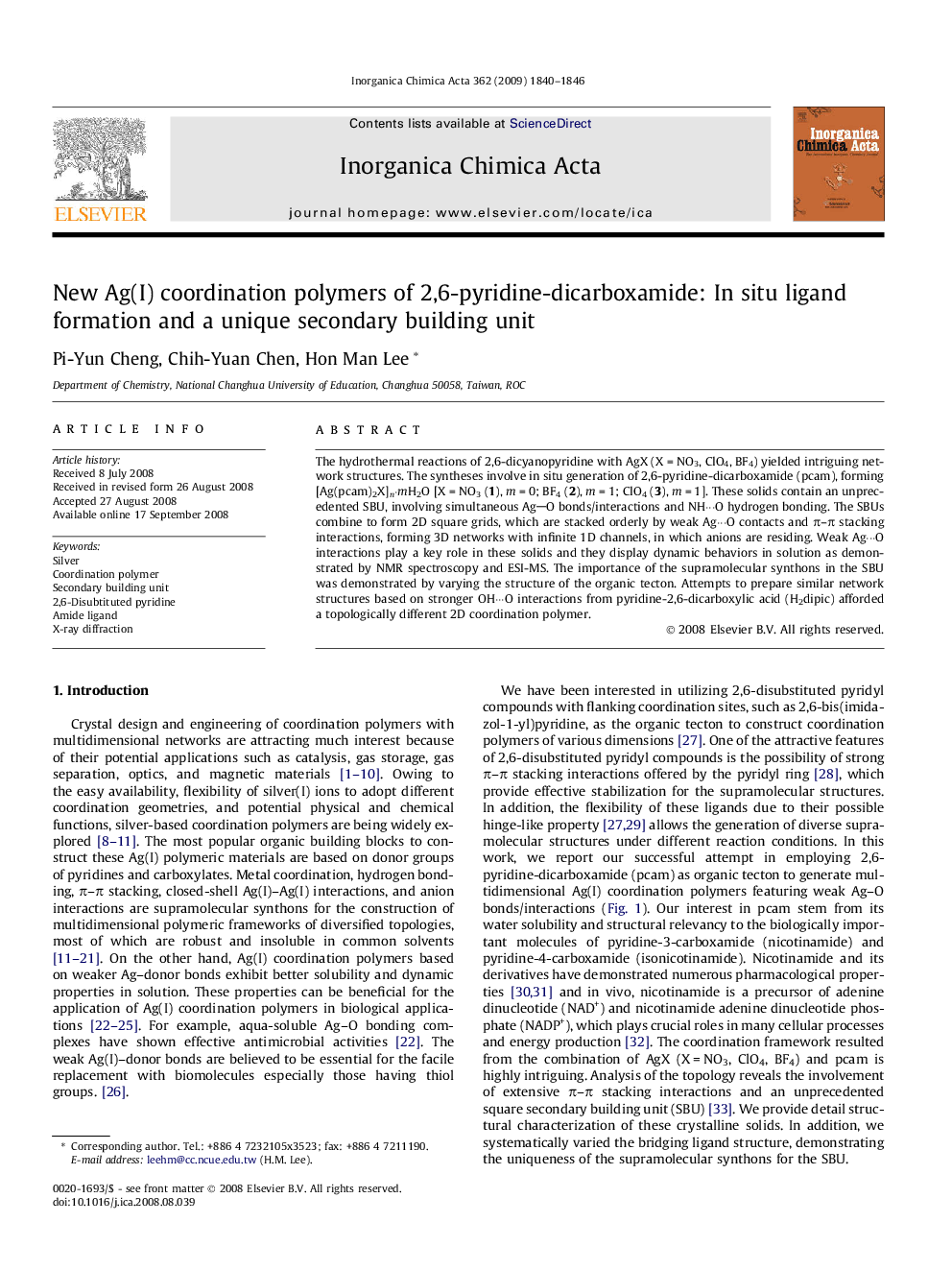| Article ID | Journal | Published Year | Pages | File Type |
|---|---|---|---|---|
| 1311389 | Inorganica Chimica Acta | 2009 | 7 Pages |
The hydrothermal reactions of 2,6-dicyanopyridine with AgX (X = NO3, ClO4, BF4) yielded intriguing network structures. The syntheses involve in situ generation of 2,6-pyridine-dicarboxamide (pcam), forming [Ag(pcam)2X]n·mH2O [X = NO3 (1), m = 0; BF4 (2), m = 1; ClO4 (3), m = 1]. These solids contain an unprecedented SBU, involving simultaneous AgO bonds/interactions and NH···O hydrogen bonding. The SBUs combine to form 2D square grids, which are stacked orderly by weak Ag···O contacts and π–π stacking interactions, forming 3D networks with infinite 1D channels, in which anions are residing. Weak Ag···O interactions play a key role in these solids and they display dynamic behaviors in solution as demonstrated by NMR spectroscopy and ESI-MS. The importance of the supramolecular synthons in the SBU was demonstrated by varying the structure of the organic tecton. Attempts to prepare similar network structures based on stronger OH···O interactions from pyridine-2,6-dicarboxylic acid (H2dipic) afforded a topologically different 2D coordination polymer.
Graphical abstractThe in situ hydrothermal reactions of 2,6-dicyanopyridine with AgX (X = NO3, ClO4, BF4) yielded [Ag(pcam)2X]n · mH2O [X = NO3 (1), m = 0; BF4 (2), m = 1; ClO4 (3), m = 1], which are 3D network structures containing an unprecedented secondary building unit.Figure optionsDownload full-size imageDownload as PowerPoint slide
